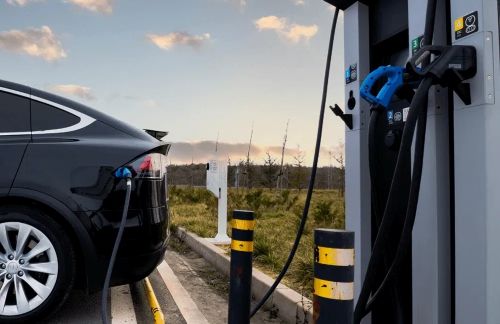


Sustainable EV Charging: Driving Toward a Greener Future
Sustainable EV Charging: A Path to a Greener Future
Electric vehicles (EVs) have emerged as a crucial solution for reducing greenhouse gas emissions. As the global transition to EVs gains momentum, the sustainability of EV charging has become an essential consideration. Despite the challenges posed by current energy grids, the shift towards renewable energy sources is making EV charging increasingly sustainable.As a leading EV charger manufacturer in China, LiCB Charge delivers reliable AC and DC electric vehicle charging stations along with comprehensive charging solutions tailored to diverse needs.
Currently, about 36% of global electricity comes from low-carbon sources, a figure projected to rise significantly. According to the International Energy Agency (IEA), the world’s renewable power capacity is expected to grow by 2,400 gigawatts (GW) between 2022 and 2027—equivalent to China’s total current power output. This surge in renewable energy, which is expected to contribute over 90% of global electricity expansion, offers a robust foundation for sustainable EV charging.
Building a Sustainable EV Charging Network
Developing an effective and sustainable EV charging business requires careful planning, focusing on location, energy sourcing, and operational efficiency. Several key strategies can ensure the success of such networks:
1. Strategic Site Selection:
The sustainability of EV charging stations begins with choosing the right location. Proximity to renewable energy sources, such as solar and wind farms, maximizes sustainability. Additionally, placing chargers in high-traffic areas like shopping malls and highway rest stops enhances accessibility and encourages EV adoption.
2. Prioritizing Safety and Serviceability:
Beyond environmental factors, ensuring the longevity of charging stations is essential. Durable, weather-resistant charging equipment reduces maintenance costs and extends service life. Regular maintenance schedules and cybersecurity measures are crucial for long-term reliability and user safety.
3. Leveraging Data for Efficiency:
Data analytics play a vital role in optimizing operations. By tracking usage patterns, operators can improve energy efficiency, implement dynamic pricing models, and plan for network expansion. Many management platforms provide real-time monitoring and predictive maintenance, helping operators stay ahead of potential issues.
4. Future-Proofing Infrastructure:
The rapid evolution of EV technology requires charging infrastructure that can adapt to future advancements. Installing fast chargers (350 kW or higher) and integrating Vehicle-to-Grid (V2G) technology, which allows EVs to return power to the grid, ensures long-term sustainability. Compatibility with various EV connectors also enhances accessibility.
5. Staying Informed on Industry Trends:
The EV charging landscape is continuously evolving, so businesses must stay updated on policies, new technologies, and market shifts. Engaging with industry experts, exploring funding opportunities, and adapting to changing consumer needs are critical for maintaining a competitive edge.
Conclusion
Sustainable EV charging is an essential part of the transition to a cleaner, greener transportation future. As renewable energy expands rapidly, the potential for EV charging to become more sustainable grows stronger. By focusing on strategic location selection, operational efficiency, and adaptability to future developments, businesses can create robust charging networks that contribute to a low-carbon future.
As EV adoption increases globally, building charging infrastructure that aligns with sustainability goals is not only a business opportunity but also a step toward a cleaner planet for future generations.Know more about Google SEO Directory
